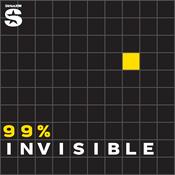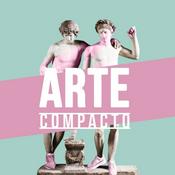7 episódios

Immaterial: Blankets and Quilts
09/8/2024 | 41min
What happens when our most intimate possessions end up in art museums?Today, Harlem Is Everywhere is featuring an episode from another podcast from The Met called Immaterial: 5,000 Years of Art, One Material at a Time. Each episode tells the stories of artists' materials to explore how and why people make art. In this episode, we cover blankets and quilts. Blankets comfort and keep us warm. They accompany us through our lives. They are keepers of some of our most intimate stories. We look at a group of artists who harness this power of blankets and quilts as totems for memory, community and cultural survival. Guests: Loretta Pettway Bennett, Gee's Bend quilt maker Marie Watt, artist Ally Barlow, associate conservator, Department of Textile Conservation, The Met Louisiana P. Bendolph, Gee's Bend quilt maker Louise Williams, board president, Freedom Quilting Bee Legacy Featured artworks: Qunnie Pettway, Housetop, ca. 1975: https://www.soulsgrowndeep.org/artist/qunnie-pettway/work/housetop Marie Watt, Untitled (Dream Catcher), 2014: https://www.metmuseum.org/art/collection/search/849042 Louisiana P. Bendolph, Housetop quilt, 2003: https://www.metmuseum.org/art/collection/search/654095 Annie E. Pettway, “Flying Geese” Variation, ca. 1935: https://www.soulsgrowndeep.org/artist/annie-e-pettway/work/flying-geese-variation Willie "Ma Willie" Abrams, Roman Stripes quilt, ca. 1975: https://www.metmuseum.org/art/collection/search/654081 For a transcript of the episode and more information, visit metmuseum.org/immaterialblankets #MetImmaterial Immaterial is produced by The Metropolitan Museum of Art and Magnificent Noise and hosted by Camille Dungy. Our production staff includes Salman Ahad Khan, Ann Collins, Samantha Henig, Eric Nuzum, Emma Vecchione, Sarah Wambold, and Jamie York. Additional staff includes Julia Bordelon, Skyla Choi, Maria Kozanecka, and Rachel Smith. Sound design by Ariana Martinez and Kristin Muller.Original music by Austin Fisher.Fact-checking by Mary Mathis and Claire Hyman.Sensitivity listening by Adwoa Gyimyah-Brempong. Immaterial is made possible by Dasha Zhukova Niarchos. Additional support is provided by the Zodiac Fund. Special thanks to Eva Labson, Scott Browning, Curator Amelia Peck, and Avery Trufelman.See omnystudio.com/listener for privacy information.

5. Art as Activism
19/3/2024 | 36min
What was the political legacy of the Harlem Renaissance? In the final episode, we’ll explore the lasting impact of the art and organizing that happened during the 1920s and ’30s and how it paved the way for the civil rights movement. We’ll highlight some key political events of the time and explore the work of artists such as Romare Bearden and Augusta Savage. We’ll also touch upon what it means for The Met to tell this story in 2024, more than fifty years after its controversial exhibition “Harlem on My Mind.” Learn more about the exhibition at metmuseum.org/HarlemRenaissance Objects featured in this episode: Romare Bearden, The Block, 1971 Augusta Savage, Lift Every Voice and Sing (The Harp), 1939 Guests: Mary Schmidt Campbell, curator, writer, historian and former president of Spelman college Jordan Casteel, artist Denise Murell, curator of the exhibition The Harlem Renaissance and Transatlantic Modernism Bridget R. Cooks, Chancellor’s Fellow and professor of art history and African American studies at the University of California, Irvine Original poem: Major Jackson’s “The Block (for Romie)” For a transcript of this episode and more information, visit metmuseum.org/HarlemIsEverywhere #HarlemIsEverywhere Harlem Is Everywhere is produced by The Metropolitan Museum of Art in collaboration with Audacy's Pineapple Street Studios.See omnystudio.com/listener for privacy information.

4. Music & Nightlife
12/3/2024 | 29min
What were the sounds of the Harlem Renaissance? Jazz and blues exploded onto the scene. People flocked to uptown venues like the Savoy Ballroom, where they could dance the Lindy Hop all night long. In this episode, we’ll learn how the music of the Renaissance was part of a larger boundary-breaking nightlife that involved gambling, speakeasies, and hole-in-the-wall clubs where people could express gender and sexuality in new ways. We’ll learn about the artists, musicians, and performers who embodied this spirit of creative experimentation and transgression—and whose work remains fresh decades later. Learn more about the exhibition at metmuseum.org/HarlemRenaissance Objects featured in this episode: James Van Der Zee, [Person in a Fur-Trimmed Ensemble], 1926 Jacob Lawrence, Pool Parlor, 1942 Archibald Motley Jr. paintings: The Liar, 1936; and Picnic, 1934 Guests: James Smalls, art historian and professor Richard J. Powell, art historian and professor Christian McBride, Grammy Award winning musician and composer Original poem: Carl Phillips’s “At the Reception” For a transcript of this episode and more information, visit metmuseum.org/HarlemIsEverywhere #HarlemIsEverywhere Harlem Is Everywhere is produced by The Metropolitan Museum of Art in collaboration with Audacy's Pineapple Street Studios.See omnystudio.com/listener for privacy information.

3. Art & Literature
05/3/2024 | 32min
How did the literature of the Harlem Renaissance play a central role in conversations around Black identity in America and abroad? In this episode we’ll learn about publications like Opportunity, The Crisis, and Fire!! which each promoted a unique political and aesthetic perspective on Black life at the time. We’ll learn about Langston Hughes and Zora Neale Hurston before they became household names and explore how collaboration and conversation between artists, writers, and scholars came to define the legacy of the Harlem Renaissance. Learn more about the exhibition at metmuseum.org/HarlemRenaissance Objects featured in this episode: Laura Wheeler Waring’s covers of The Crisis, September 1924 and April 1923 Winold Reiss, Cover of Opportunity: Journal of Negro Life, February 1925 Winold Reiss, Langston Hughes, 1925 Aaron Douglas, Miss Zora Neale Hurston, 1926 Guests: Monica L. Miller, Ann Whitney Olin Professor of English and Africana Studies, Barnard College, Columbia University John Keene, poet and novelist For a transcript of this episode and more information, visit metmuseum.org/HarlemIsEverywhere #HarlemIsEverywhere Harlem Is Everywhere is produced by The Metropolitan Museum of Art in collaboration with Audacy's Pineapple Street Studios.See omnystudio.com/listener for privacy information.

2. Portraiture & Fashion
20/2/2024 | 30min
What role did fashion play in the Harlem Renaissance? Artists at the time were committed to creating a new image of Black life in America and abroad. In this episode, we’ll explore how Black self-representation evolved during this period through the photography of James Van Der Zee and paintings by artists like William Henry Johnson and Archibald J. Motley, Jr. We’ll also examine how fashion conveyed community values and offered new modes of individual expression that challenged racist stereotypes and created a shared sense of dignity. Learn more about The Met's exhibition at metmuseum.org/HarlemRenaissance Objects featured in this episode: James Van Der Zee, Nude, Harlem, 1923 (1970.539.27) William Henry Johnson, Street Life, Harlem, ca. 1939–1940 James Van Der Zee, Couple, Harlem, 1932 (2021.446.1.2) Archibald J. Motley, Jr., Black Belt, 1934 Guests: Bridget R. Cooks, Chancellor’s Fellow and professor of art history and African American studies at the University of California, Irvine Robin Givhan, Senior critic-at-large, The Washington Post For a transcript of this episode and more information, visit metmuseum.org/HarlemIsEverywhere #HarlemIsEverywhere Harlem Is Everywhere is produced by The Metropolitan Museum of Art in collaboration with Audacy's Pineapple Street Studios. See omnystudio.com/listener for privacy information.
Mais podcasts de Arte
Podcasts em tendência em Arte
Sobre Harlem Is Everywhere: The Harlem Renaissance and Transatlantic Modernism
Ouça Harlem Is Everywhere: The Harlem Renaissance and Transatlantic Modernism, Fresh Air e muitos outros podcasts de todo o mundo com o aplicativo o radio.net

Obtenha o aplicativo gratuito radio.net
- Guardar rádios e podcasts favoritos
- Transmissão via Wi-Fi ou Bluetooth
- Carplay & Android Audo compatìvel
- E ainda mais funções
Obtenha o aplicativo gratuito radio.net
- Guardar rádios e podcasts favoritos
- Transmissão via Wi-Fi ou Bluetooth
- Carplay & Android Audo compatìvel
- E ainda mais funções


Harlem Is Everywhere: The Harlem Renaissance and Transatlantic Modernism
baixe o aplicativo,
ouça.





































